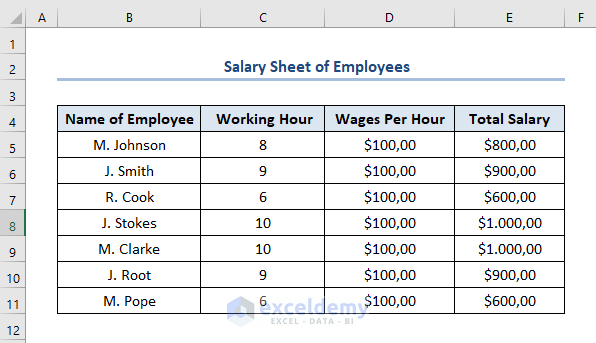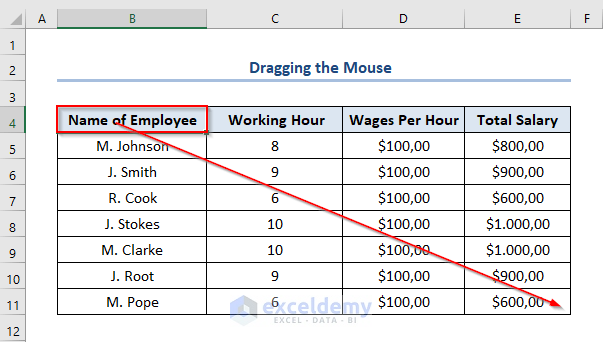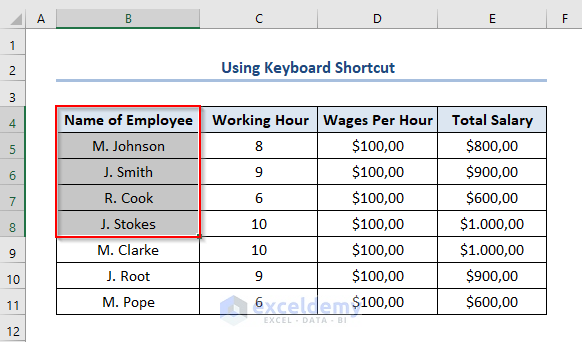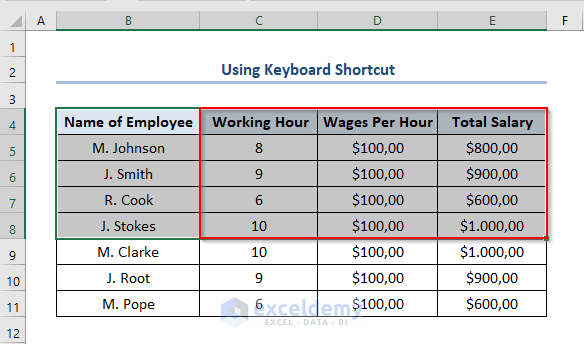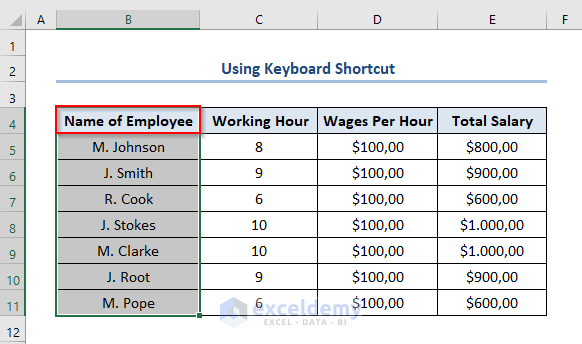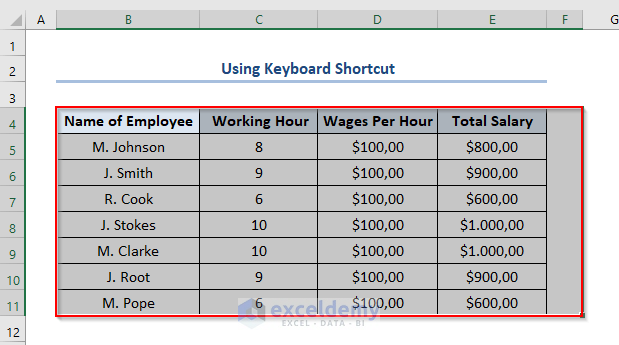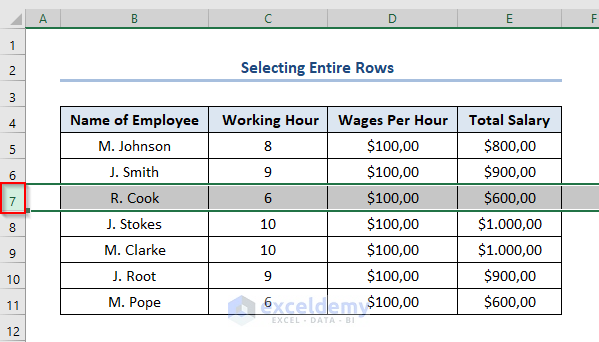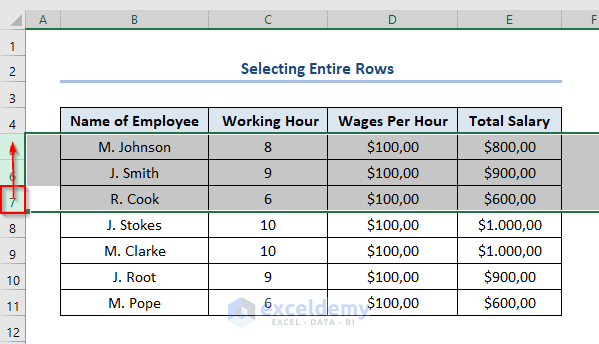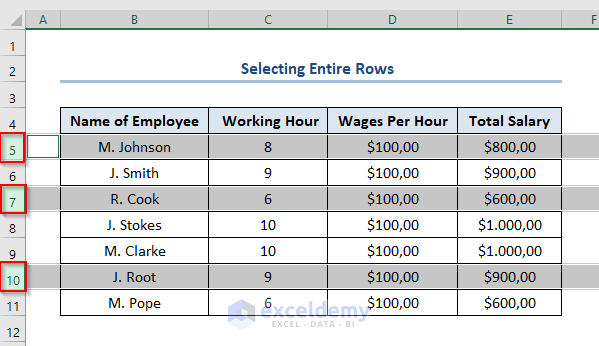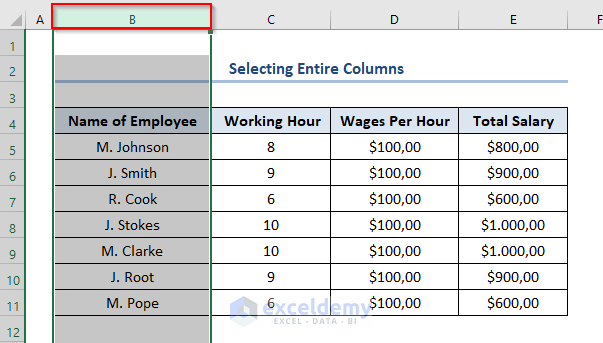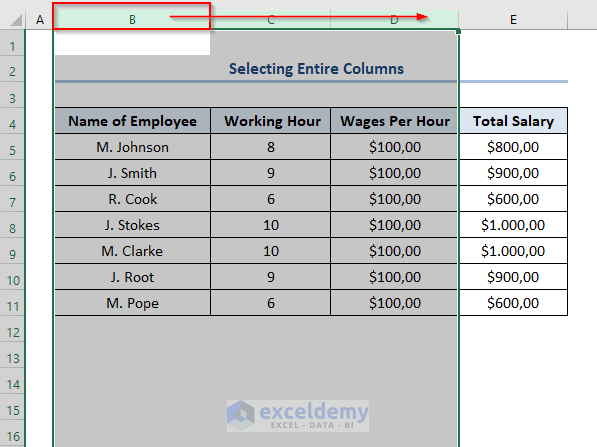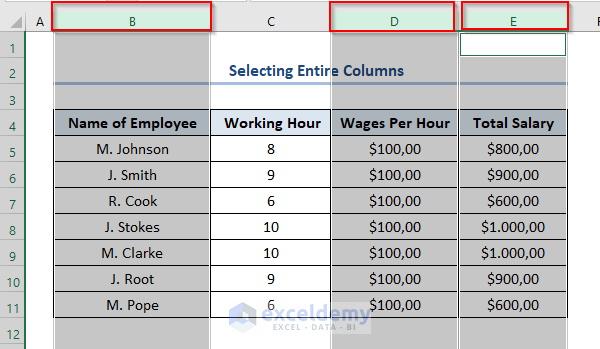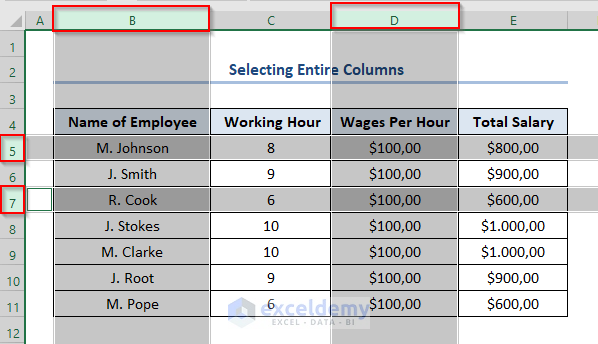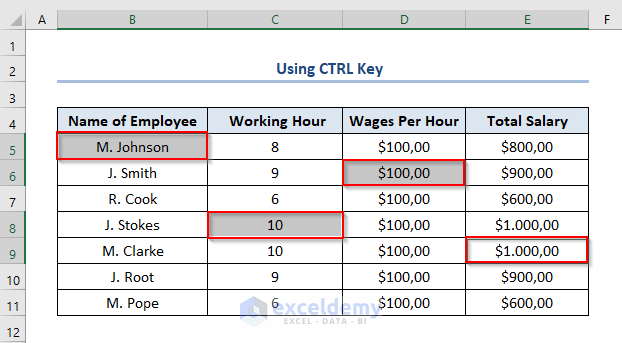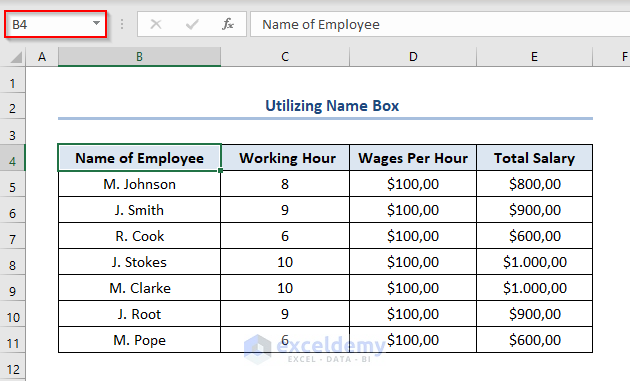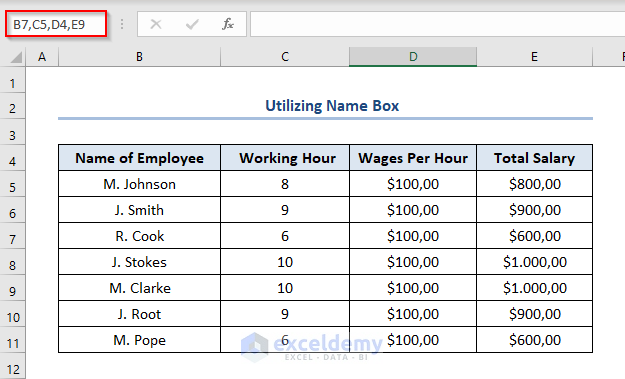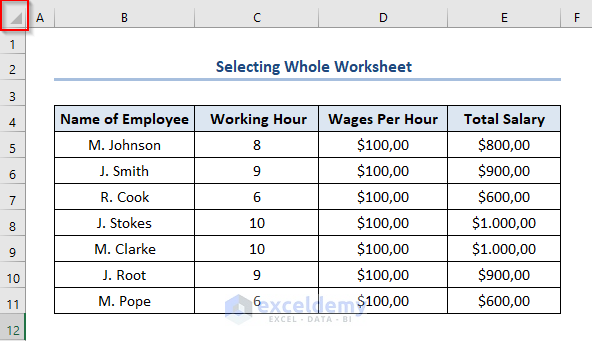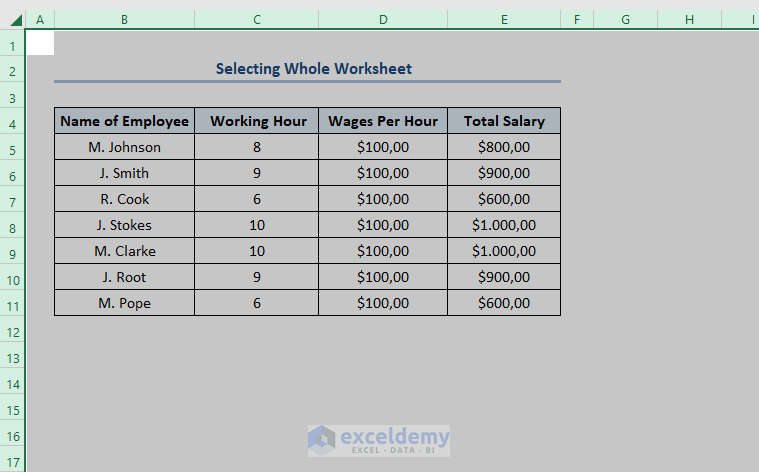If you are looking for how to select multiple cells in Excel, then you are in the right place. One of the most basic actions that we perform in Excel is to select multiple cells in an Excel file to do some operations. Here in this article, we’ll try to discuss how to select multiple cells in Excel.
Download Practice Workbook
7 Ways to Select Multiple Cells in Excel
Excel offers different ways to select multiple cells. These are very handy to use. You just need to follow some simple steps. To show this, we have made a dataset named Salary Sheet of Employees. We’ll show how you can select multiple cells from here.
1. Dragging Mouse to Select Multiple Cells
This is the easiest way to select multiple cells. You just need to follow some simple steps.
- Firstly, click on the first cell of the database you want to select. Here I have left-clicked on cell B4.
- Secondly, drag your mouse over all the cells you want to select. After dragging over all the cells, leaving the mouse.
- Eventually, You will find all the cells have been highlighted in blue. This means they have been selected.
Read More: How to Select Visible Cells in Excel (5 Quick Tricks)
2. Using Keyboard Shortcut
Keyboard shortcut is a method by which we can select as many cells as we want both in Column wise and Row wise.
2.1. Selecting Cells One by One
You can use a keyboard shortcut to select cells one by one.
- Firstly, select a cell. Here, we have selected cell B4.
- Secondly, press Shift + Down Arrow(↓) to select the cells one by one column-wise. Here I have selected all the cells from B4 to B8 column-wise.
- Thirdly, then press SHIFT + END to select the cells one by one row-wise. Here we have selected all the cells from Column B to E row-wise.
2.2. Selecting Cells Together
By using the keyboard shortcut you can select cells altogether too.
- Firstly, click on the first cell of the database you want to select. Here, we have selected B4.
- Secondly, press CTRL + SHIFT + Down Arrow(↓). It will select all the cells column-wise until there is a blank cell. Here all the cells from B4 to B11 have been selected.
- Thirdly, press CTRL + SHIFT + END. It will select all the cells row-wise until there is a blank cell in any row. Here we have selected Columns B to F.
Note: You can not also select non-adjacent cells in this way, only the adjacent cells.
Read More: How Do I Quickly Select Thousands of Rows in Excel (2 Ways)
3. Selecting Entire Rows
You can select an entire Row by following a single step.
- Just left-click on the number of the Row you want to select. All the cells in that Row will be selected. Here I have selected Row 7.
- Eventually, you can just drag your mouse and select adjacent Rows. I have selected Rows 5, 6, and 7
Additionally, you can select non-adjacent rows also.
- Just hold the CTRL key on your keyboard.
- Then click on the number of Rows. Here we have selected Rows 5, 7, and 10.
Read More: How to Select Row in Excel If Cell Contains Specific Data (4 Ways)
Similar Readings
- Select All Rows in Excel (6 Easy Ways)
- How to Press Enter in Excel Without Changing Cells (2 Easy Ways)
- Lock a Group of Cells in Excel (7 Different Methods)
- How to Group Cells in Excel (6 Different Ways)
- Select Only Filtered Cells in Excel Formula (5 Quick Ways)
4. Selecting Entire Columns
You can select an entire Column like we have seen before to select the entire Row.
- This is just like selecting the entire Row. Firstly, Left-click on the number of Columns you want to select. Here I have selected the entire Column B.
- As like Rows, secondly, you can just drag your mouse and select adjacent Columns. Here, I have selected Columns B, C and D.
Additionally, you can select non-adjacent Columns also.
- Just hold the CTRL key on your keyboard and click on the number of Columns. Here I have selected Columns B, D, and E.
Eventually, if you want, you can select specific Columns and Rows together.
- Hold the CTRL key on your keyboard and click on the number of Rows and Columns. Here I have selected Columns B and D with Rows 5 and 7.
Read More: How to Select Column to End of Data in Excel (3 Easy Methods)
5. Using CTRL Key to Select Multiple Cells
By using the CTRL key you can select both adjacent and non-adjacent cells.
- Firstly, hold the CTRL key on your keyboard.
Secondly, click on the cells you want to select. Look at the image below. Here we have selected B5, C8, D6, E9
Read More: [Solved!] CTRL+END Shortcut Key Goes Too Far in Excel (6 Fixes)
6. Select Multiple Cells Not Next to Each Other Utilizing Name Box
Eventually, you can select multiple cells by using the Name Box of the Excel Sheet.
Name Box is the box located on the topmost left side of the Excel Sheet, right in front of the Formula Bar like the picture below.
- Firstly, write the references of the cells you want to select in the Name Box. Differentiate them using commas(,). Eventually, the cells will be selected automatically. You can select both adjacent and non-adjacent cells in this way. Here, we have selected B7, C5, A7, D4, and E9.
- Secondly, click ENTER to get the output.
Read More: Select All Cells with Data in a Column in Excel (5 Methods + Shortcuts)
7. Selecting Whole Worksheet
Finally, you can select the entire worksheet. Left-click on the small triangle in the topmost left corner of the worksheet.
And you will find the whole worksheet selected like this.
Read More: How to Go to the End of Excel Sheet (2 Quick Methods)
Conclusion
That’s all about today’s session. And these are the ways to select multiple cells in Excel. We strongly believe this article would be highly beneficial for you. Don’t forget to share your thoughts and queries in the comments section and explore our website ExcelDemy, a one-stop Excel solution provider.
Related Articles
- Data clean-up techniques in Excel: Filling Blank Cell
- What is Cell in Excel Definition?
- Selecting Data in Different Columns for an Excel Chart
- Select Highlighted Cells in Excel (4 Easy Techniques)
- How To Select All Rows to Below in Excel (3 Easy Methods)
- What is an Active Cell in Excel?
- How to Go to Last Non Empty Cell in Column in Excel
